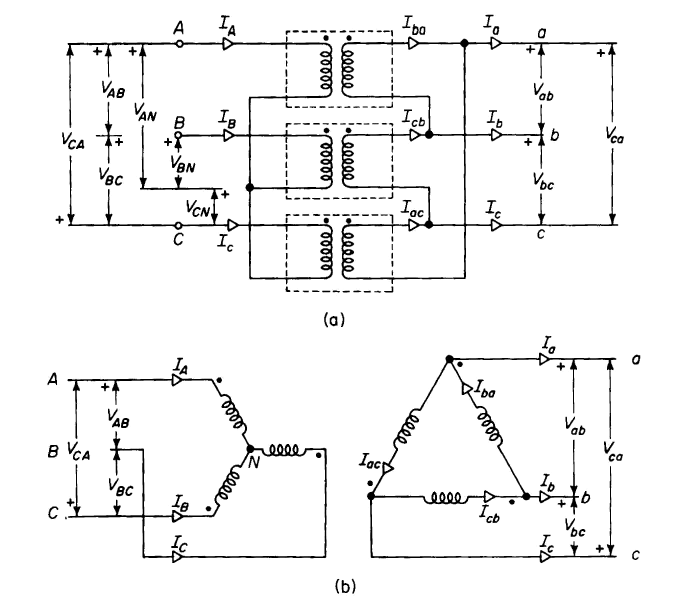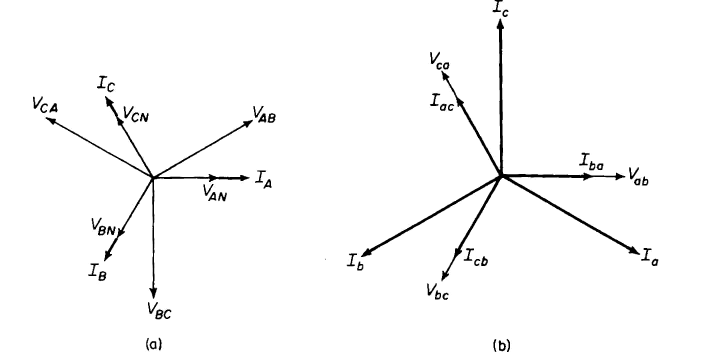| Capacitors, Magnetic Circuits, and Transformers is a free introductory textbook on the physics of capacitors, coils, and transformers. See the editorial for more information.... |

|

Home  The Transformer The Transformer  3-Phase Transformer Connections 3-Phase Transformer Connections  Wye-Delta Connection Wye-Delta Connection |
|||||
| See also: Wye-Wye Connection, Delta-Delta Connection, Open-Delta or V-V Connection | |||||






|
|||||
Wye-Delta Connection
The wye-delta connection affords the advantage of the wye-wye connection without the resulting disadvantage of unbalanced voltages and third harmonics in the line-to-neutral voltages when operating without the neutral wire. The wye-delta arrangement is shown in Fig. 6-25. In high-voltage transmission systems, the high side of a transformer bank or of a 3-phase transformer is generally connected in wye, whereas the low side is connected in delta. The delta connection assures balanced line-to-neutral voltages on the wye side whether or not there is a neutral conductor on the wye side, and it provides a path for the third harmonic components in the exciting current independent of the neutral conductor.
The wye-delta or delta-wye transformation is not confined to applications in which the high-voltage side is connected in wye, but is also coming into general use in the 208/120-v system on the low side. In such systems, the low side is connected wye with the neutral point grounded. Single-phase loads are connected line to neutral for 120-v operation, whereas 3-phase equipment, such as motors, are connected line to line for operation at 208 v.
Figure 6-26 shows the phasor diagram for a wye-delta transformation. From this diagram it is evident that there is a large phase angle between the line-to-line voltages on the wye side and the corresponding line-to-line voltages on the delta side. This angle is 30° with the phases as designated in Fig. 6-26. Angles of 90° and 150° are possible, depending on how the phases on the two sides are designated.
|
|||||
Home  The Transformer The Transformer  3-Phase Transformer Connections 3-Phase Transformer Connections  Wye-Delta Connection Wye-Delta Connection |
|||||
Last Update: 2011-02-16



